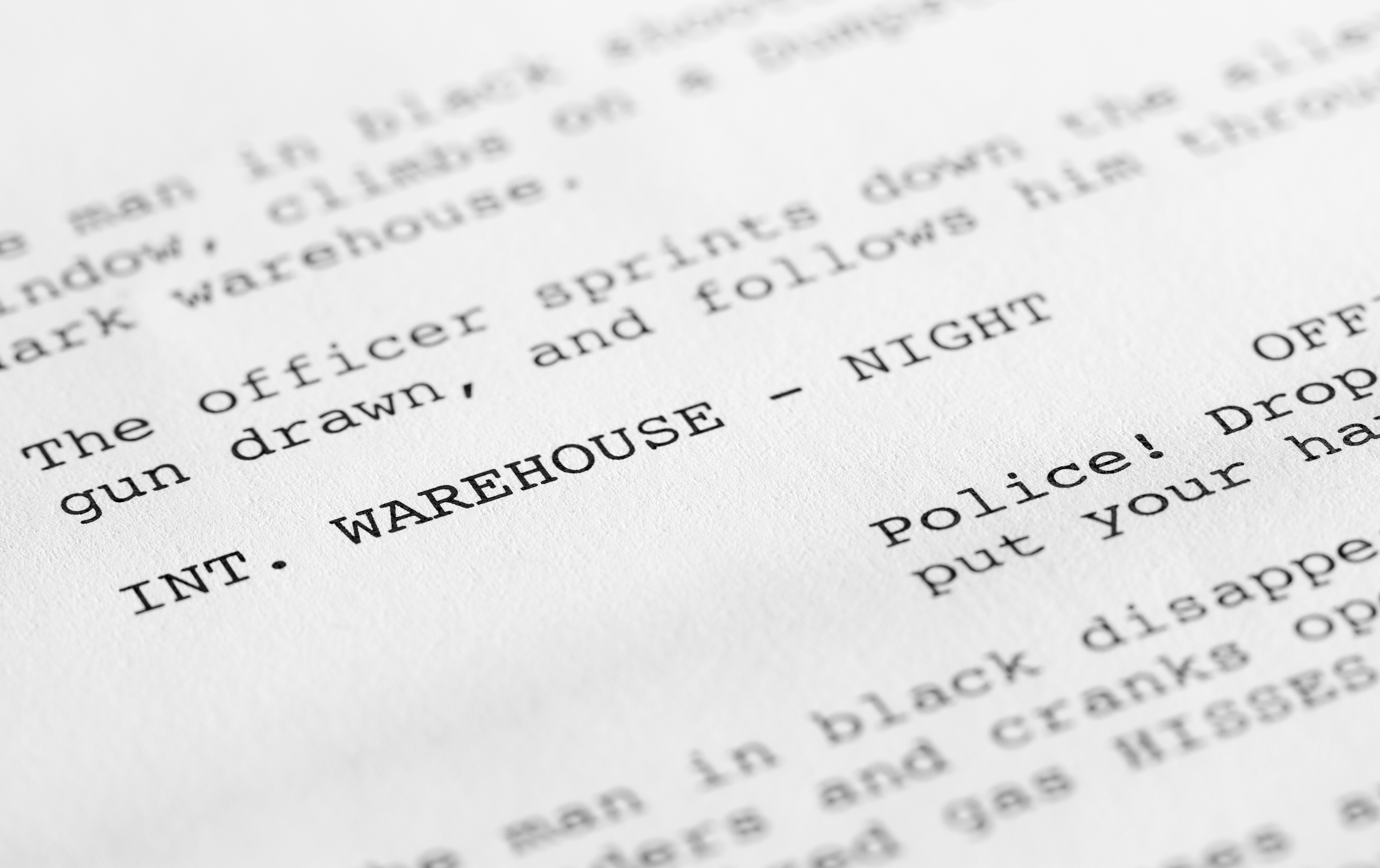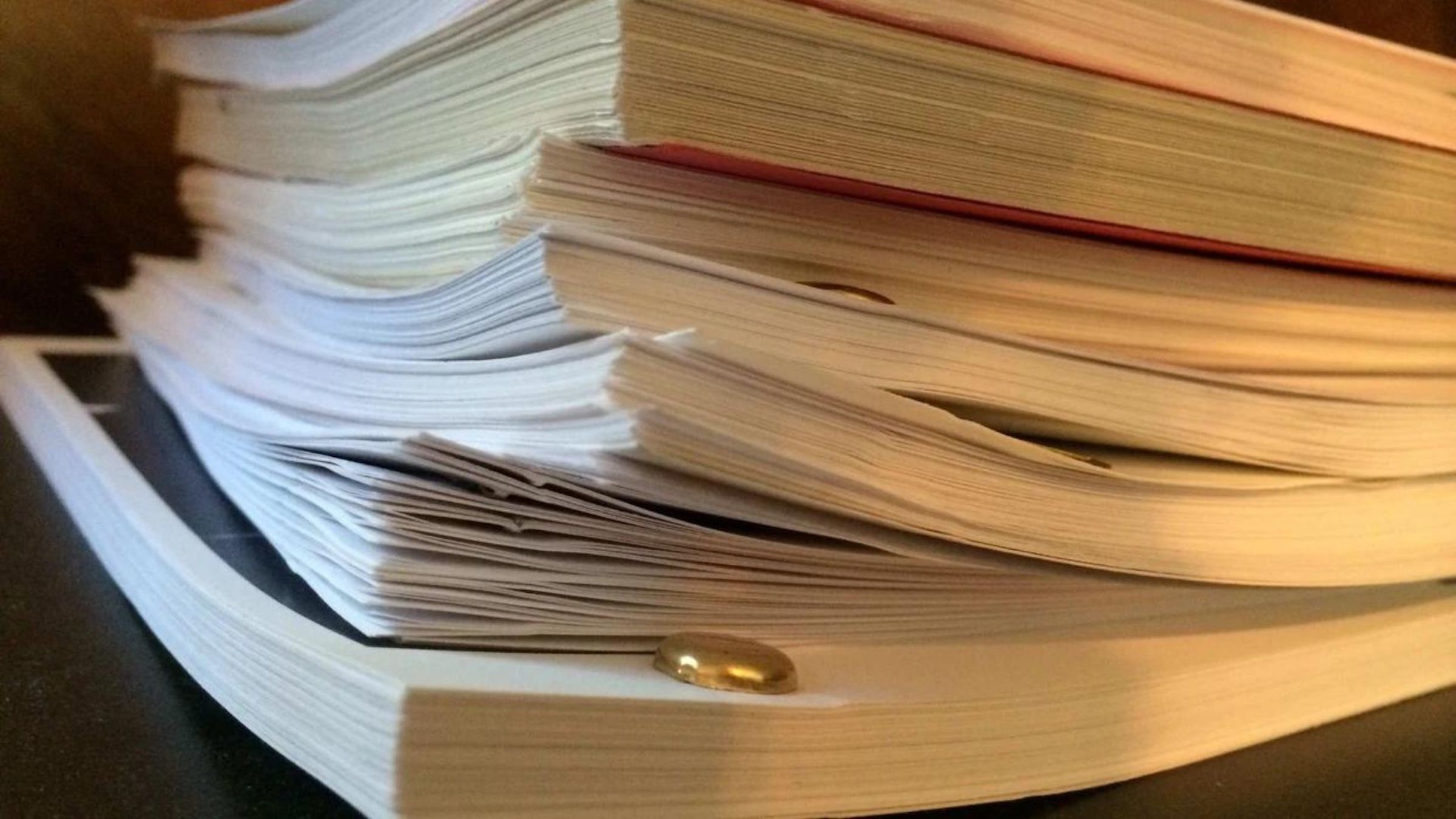The great debate: should you insert images into your script?
June 8, 2021
The option to insert images into your script was introduced with Final Draft 11. This was something I had wanted for years and I remember being thrilled when this new tool was first announced.
The very idea of inserting images into a screenplay is debated in some circles. Some writers, like myself, think it can be an effective way to enhance your script; others take a traditional viewpoint and think inserting images is unprofessional or “too gimmicky”.
Maybe inserting images into a screenplay was considered unprofessional in the past, but from my experience it’s not frowned upon anymore — just as long as the tool isn’t used excessively (more on this later) — and it’s actually encouraged to a degree. For example, in recent biopic scripts I’ve written, my manager suggested including a photo of the real-life people the scripts were based on. This is something he does with all of his writers who write biopics. After the title page is a single page for the photo with “based on a true story” written beneath. Many of these biopics — with this photo page included — have either sold, been optioned, or placed on the Black List. So it’s now an industry norm, and it helps the reader visualize the script’s central personality.
When I select a photo of the person, I make sure it is not only a decent-quality image, but also that it captures the essence of the individual I am writing about. I’ve also seen similarly placed photos on second pages that use a sketch or image that captures the vibe or atmosphere of the script. Think of it as a tone poem; something that sets the mood and helps bring out the aesthetic you’re going for. As long as it’s not multiple pages of images, most reps, producers or studio execs these days will not be put off by this use of imagery. Generally speaking, if images are not overused or a crutch for a weak script, they’re not considered unprofessional anymore. The most important thing is still whether the script is marketable or not and/or whether you have a voice as a writer. A well-placed image here and there within your script isn’t going to be a dealbreaker and could even help in some cases.
Regarding the “too gimmicky” argument, this might come down to a writer’s personal style and taste. If you’re a traditionalist and believe that the words on the page should speak for themselves, then by all means don’t bother inserting images into your script. It might be encouraged at times but it’s definitely not required. Like I wrote above, if your script is marketable or has a strong voice, it still might emerge from the pack sans visual embellishments. My thinking, however, is why not use every tool that’s available to you? Ultimately, a script is something you’re trying to sell. I don’t see using a few images to help sell your script as any different than coming up with a logline. Again, it’s about setting a mood and trying to inspire excitement.
Of course, like anything, inserting images can be overdone and the result will be a script that looks unprofessional. It’s still first and foremost a screenplay; it’s not a lookbook. If a rep, producer or studio exec pages through a script that has picture after picture within it, they’ll most likely think you’re not a serious writer and pass on it. Definitely don’t put storyboards or pictures of actors you envision playing your characters into the script. Those are elements for a producer and director to be concerned with. It’s amateurish for a writer to insert themselves into that process and especially at the spec stage.
The few times I’ve used an image in the actual text of the screenplay, it was to illustrate something that was simply easier to do with a picture than words. For example, in one of the biopics I wrote recently, there is a scene in which a public figure looks at a series of memes about them on their computer. Rather than describe every meme in detail, I thought it was more economic and effective to insert the memes into the script. Not only did it cut down on a bunch of detailed description, it put the reader into the character’s point of view; they’re seeing the same thing the character is seeing. Similarly, I wrote a supernatural thriller in which a character discovers and reads an ancient book of spells. Again, I felt it was more economic and effective to insert the illustrations the character was looking at rather than have a big block of description. Generally speaking, if it serves the story you’re telling and it’s not overused, I think an image here and there is an effective and useful tool.
Ultimately, inserting images is your choice. It’s just one of various ways you can enhance your script and it’s definitely worth considering.
Written by: Edwin Cannistraci
Edwin Cannistraci is a professional screenwriter. His comedy specs PIERRE PIERRE and O’GUNN both sold with more than one A-list actor and director attached. In addition, he’s successfully pitched feature scripts, TV pilots and has landed various assignment jobs for Universal, Warner Bros, Paramount and Disney.



